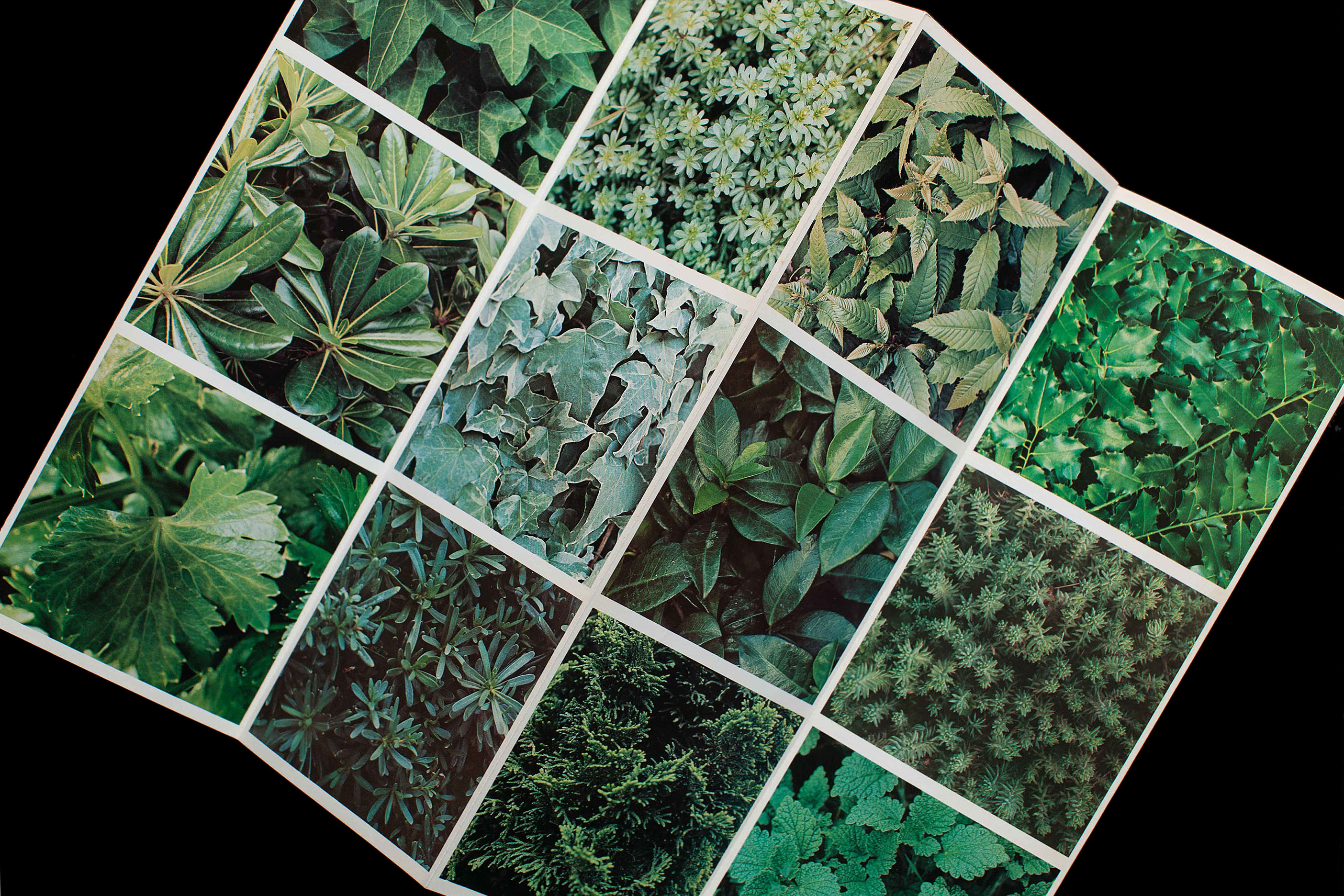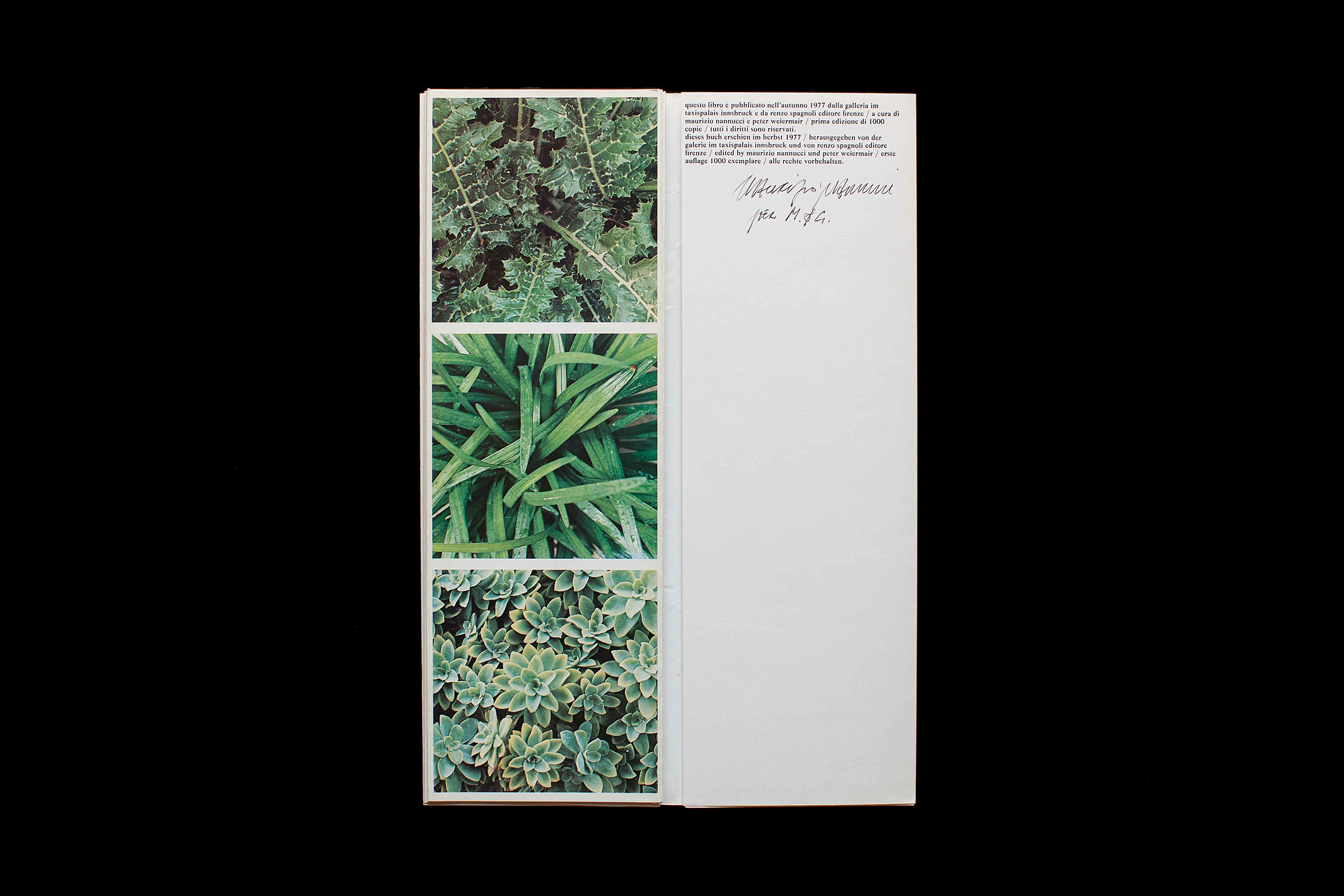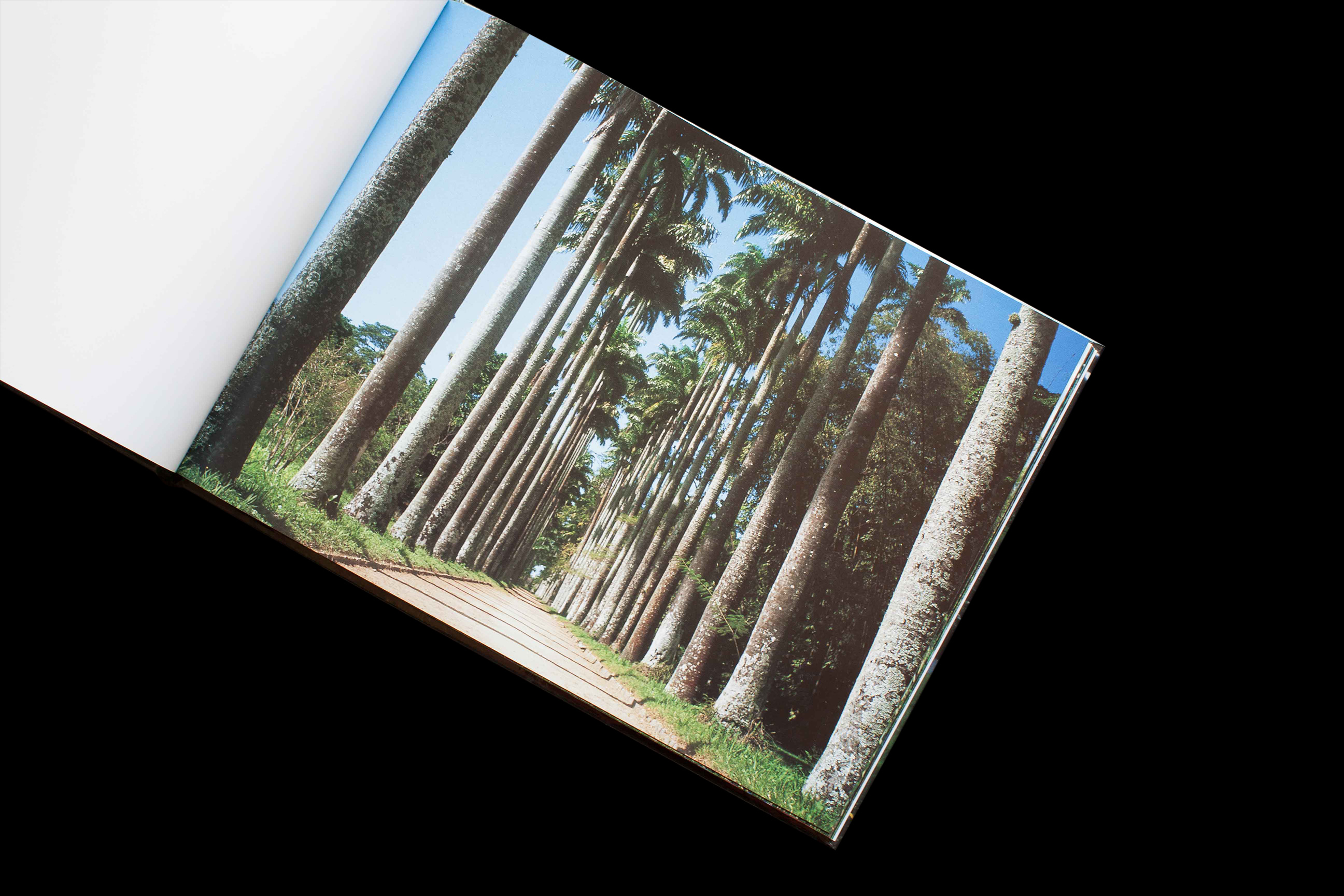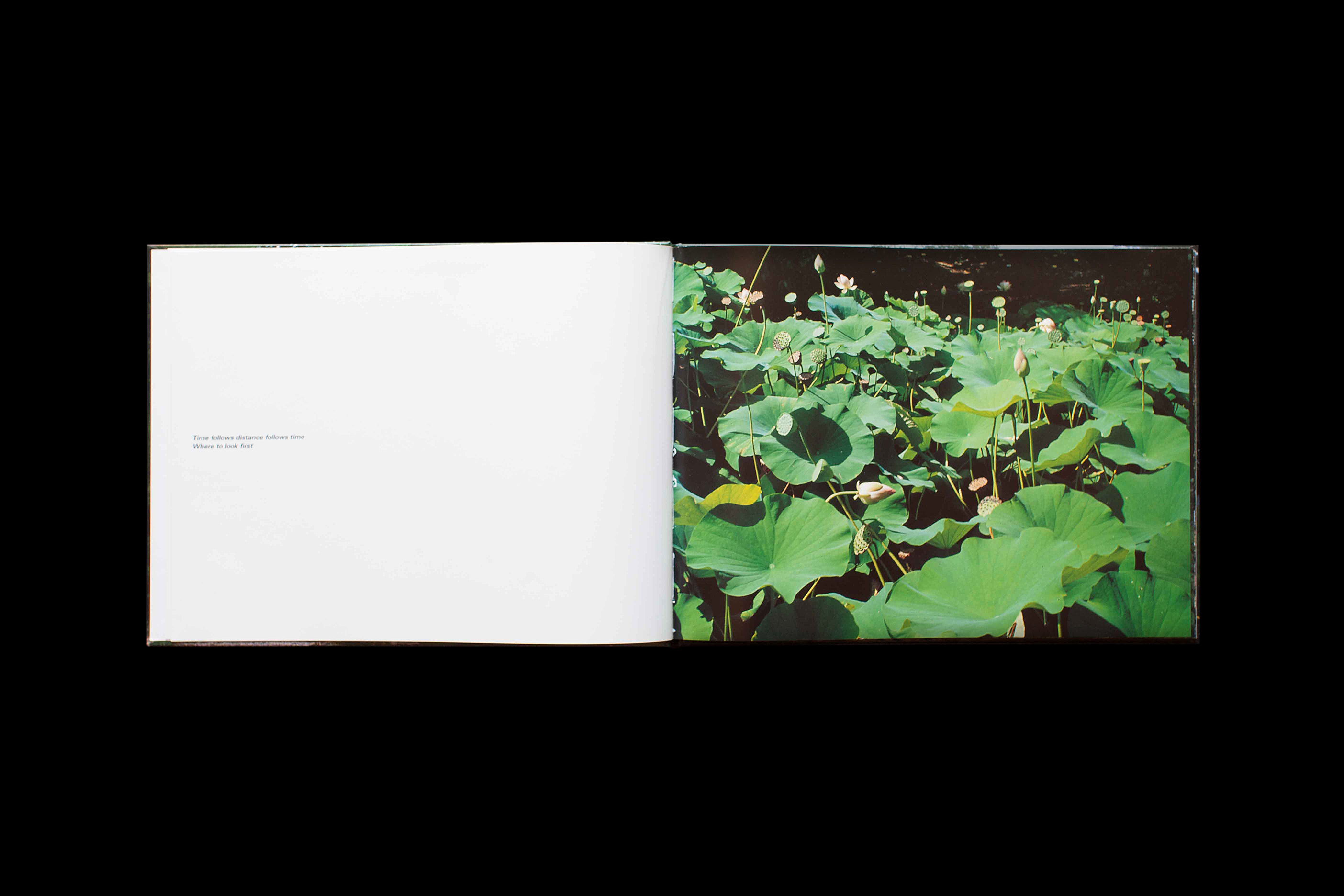Librarti / Nature with Maurizio Nannucci
Librarti
A Living Room column / Book recommendations by Florentine publishing house Centro Di which focus on the analysis and the history of ‘libri d’artista’, in which works of art take the form of a book.
living room
centro di

Nature
For this week’s theme, Nature, we selected two artists’ books by the Florentine artist Maurizio Nannucci. In the mid-1960s, Nannucci began to explore the relationship between image, language, and writing. He was inspired by the concepts of linguistics and utilised mix-media in his work: neon, photography, video, sound, artist’s books, publications, and limited print editions.
In his research, Nannucci developed an interdisciplinary approach, forging a web of international collaborations with artists, intellectuals, painters, musicians, architects, poets, and philosophers. The interaction with these collaborators, based on cooperation, is a key element to Nannucci’s artistic practice which is of an interdisciplinary nature. It brought him to experiment with new materials and new media, fostering his interest for group projects and editorial publications.
In addition to being an artist, Nannucci is also an editor, curator, and collector. He founded the Exempla publishing house, the record label Recorthings, and the Zona Archives publishing house with the goal of promoting new ideas and aesthetic and behavioural models. Along with other artists, non-profit organisations (such as Zona and Base), Nannucci helped create spaces in which artists could meet and exchange ideas.
Central to his work are the environment, language, color, light, and the interaction between these components.
The books we discuss are Sessanta verdi naturali. Da una indagine/identificazione del colore in natura effettuata nel periodo luglio 1973 / ottobre 1974 and A Green Journey: Botanical Gardens.
Sessanta verdi naturali
Da una indagine/identificazione del colore in natura effettuata nel periodo luglio 1973 / ottobre 1974
by Maurizio Nannucci
Galerie Taxispalais – Galleria Spagnoli
Innsbruck – Firenze, 1977

The first book focuses on one of Nannucci’s main interests: color, in all its manifestations.
The first edition of this artist’s book, published in 1977 by Galerie im Taxispalais (Innsbruck) and by Renzo Spagnoli Editore (Florence), was printed in 1000 copies. It collects sixty color photographs of sixty plants which show different shades of the color green in nature.
The folded book cover is made up of square images printed in three horizontal rows and an introductory text which poses an inquiry about ‘natural greens’ within the context of a broader study on color.
This work focuses on annotating and classifying plant samples, to highlight their different hues of green with the utmost precision. The identification of the shades of green corresponds to the latin name of the plant species (listed on a separate page).
Nannucci, in his color studies starting in 1970, had realised that industrially produced colors were classified approximately and casually. He wanted to establish a basic chromatic code, and his method was to trace examples of color in nature, in their unaltered state, nature being the origin and reference point for the entire chromatic pantone.


The attention to nature and its hues is also the subject of the second book, published by Centro Di in 1994 in 1000 copies, fifty of which are accompanied by an original photographic print that is numbered and signed by the artist.

A Green Journey: Botanical Gardens
by Maurizio Nannucci
Centro Di, Firenze, 1994

The format is that of an album: it is a collection of photographs taken in botanical gardens the world over, including those of Pisa, Florence, Palermo, Napoli, Monaco, Rio de Janeiro, Vienna, Vancouver, Berlino, Tokyo, and Phoenix.
Botanical gardens are places in which all perceptions — visual, olfactive, auditory, and tactile — are heightened. They are museums in a state of perpetual change, ‘a portrayal of science and myth, order and chaos, beauty and the transient, and are conceived with a focus on nature, culture, science, and art.’
Each photograph in this artist’s book is placed on the right page and juxtaposed with a sentence printed in black script on the left white page.
The exchange, the comparison, the relationship between images and words create new meanings that are at times contradictory or merely implied. These words and images intensify the meanings in relationship to their context, the connections forged, the feelings evoked, the message conveyed and all the possible meanings which the viewer could attribute to them. The significance varies according to each viewer’s psyche and linguistic and social background.
The collection of these photographs, which had been taken starting from the mid-1960s, represents Nannucci’s method of cataloguing and conserving documents and material related to this creative process, and results in the accumulation of a vast archive. Another artist’s book by Nannucci with similar origins is L.H. Lives Here (1987), a collection of photographs shot in front of the homes of various artist friends all over the world. The two books have another common theme that is dear to their author: travel.
Travel is essential to spreading the language of art and its message by fostering encounters and exchanges between artists.
Inventorying, meeting, connecting, as well as traveling, gathering, spreading become matter and discourse of the work itself.


CENTRO DI
Centro Di publishing house was founded in Florence by Ferruccio and Alessandra Marchi in 1968. Today, Centro Di is directed by Ginevra Marchi and specialises in the publication of books on art history, architecture, and the decorative arts — including exhibition catalogues, monographs, conference proceedings, museum catalogues, and periodicals.

Until 2004, Centro Di was both a publishing house and bookstore. When the bookstore was closed an archive consisting of 20,000 titles published between the 1960s and 80s (including exhibition catalogs, artist’s books, and publications on specialized topics) was left behind.
In June 2018, Centro Di opened Gallibreria, a space where thematic exhibitions of books from various private collections are presented. Gallibreria’s inauguration featured an exhibition of artist’s books selected from the Centro Di archives and artist Maurizio Nannucci’s personal archive.
In 2018, with the collaboration of curators Alberto Salvadori and Giacomo Zaganelli, Centro Di created a new series of books dedicated to Italy, XXI. Guide d’artista.
Centro Di also publishes the following periodicals: Perspective (in collaboration with the Universities of Siena and Napoli); OPD Restauro, Opificio delle Pietre Dure’s annual bulletin; Mitteilungen des kunsthistorischen Institutes in Florenz by the German Institute of Art History in Florence; and the Rivista di Storia della Miniatura, the annual publication of the International Society of the the same name.
centro di